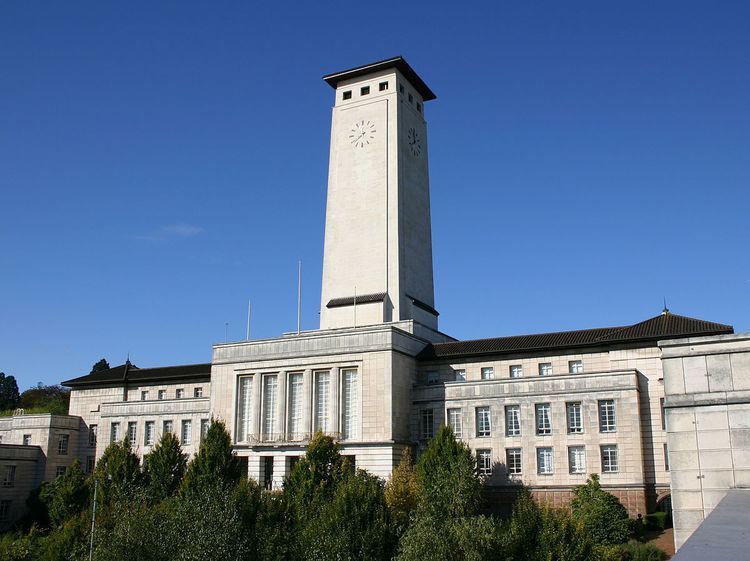Mayor of Newport David Atwell Voting system First past the post | Seats 50 Last election 3 May 2012 | |
 | ||
Leader Debbie Wilcox, Labour Party | ||
Newport City Council (Welsh: Cyngor Dinas Casnewydd) is the governing body for the city of Newport, one of the subdivisions of Wales within the United Kingdom. It consists of 50 councillors, representing the city's 20 wards.
Contents
From the 2008 election until 2012 no party had an overall majority of councillors so the council was controlled jointly by the Conservatives and Liberal Democrats with the Conservatives' Matthew Evans as council leader. For decades previously it had been controlled by the Labour Party. In the 2012 elections the Labour Party regained control with an overall majority.
Political makeup
Elections take place every four years. The last election was 3 May 2012.
Municipal history
Newport is an ancient mesne borough, occupying an important position on the Welsh Marches. The town grew up round the castle built early in the 12th century. Giraldus Cambrensis, writing in 1187, calls it Novus Burgus, probably to distinguish it from Caerleon, whose prosperity declined as that of Newport increased. The first lord was Robert Fitzhamon, who died in 1107, and from him the lordship passed to the Earls of Gloucester and Stafford and the Dukes of Buckingham. Hugh le Despenser, who held the lordship for a short time, obtained in 1323 a charter of liberties for the burgesses, granting them freedom from toll throughout England, Ireland and Aquitaine. Hugh, Earl of Stafford granted a further charter in 1385, confirmed by his grandson in 1427, which gave the burgesses the right of self-government and of a merchant gild. On the attainder of the Duke of Buckingham in 1483 the lordship lapsed to the crown, of whom it was held in the 16th and 17th centuries by the Pembrokes, and in the 19th by the Beauforts.
The town was incorporated by Royal Charter of James I in 1623 and confirmed by Charles II in 1685. This created a Corporation which consisted of a mayor and twelve aldermen who governed the Borough and were responsible for law and order. They were assisted by a Recorder and two Bailiffs. This system of government lasted in essence until the passing of the Municipal Corporations Act 1835. This reconstituted the Corporation as an elected Borough Council, comprising a mayor, aldermen and councillors. The Newport Borough Police were formed a year later.
During the 19th century the Borough grew in size from 239 acres (97 ha) to 4,924 acres (1,993 ha) by taking in parts of the surrounding parishes of St. Woolos, Christchurch and Nash.
When modern local government was introduced by the Local Government Act 1888 it was one of the first places to become a county borough (in 1891), and thus became administratively independent of Monmouthshire. The new Newport Civic Centre, designed by architect Thomas Cecil Howitt, was opened to the public in 1940. This situation persisted until 1974 when, due to local government reorganisation and the abolition of county boroughs, it became a non-metropolitan borough, along with a large increase in its borders to 46,976 acres (19,011 ha). In 1996, another wave of local-government reorganisation reverted the council to its previous status of a county borough. In 2002 it was granted formal city status.
Mayoralty
For the municipal year 2014—2015, the mayor is The Right Worshipful The Mayor of Newport Councillor Matthew Evans.
Wards
The city is divided into 20 wards. Most of these wards are coterminous with communities (parishes) of the same name. Each community can have an elected council. The following table lists city council wards, communities and associated geographical areas. Communities with a community council are indicated with a '*':
Sites
In the news
In October 2013, the council's controversial demolition of a 35-metre long Chartist Mural reached national attention. The 35-year-old mural commemorated Newport's Chartist history, specifically the Newport Rising of 1839. The Guardian suggested it was "not just budgets, but a collective cultural history that's under attack.". A spokesman for the council stated that the mural "has served to remind us of Newport’s past, but we must now focus on Newport’s future." Actor Michael Sheen helped to found a trust, to commission a new memorial, with £50,000 of funding provided by Newport City Council
